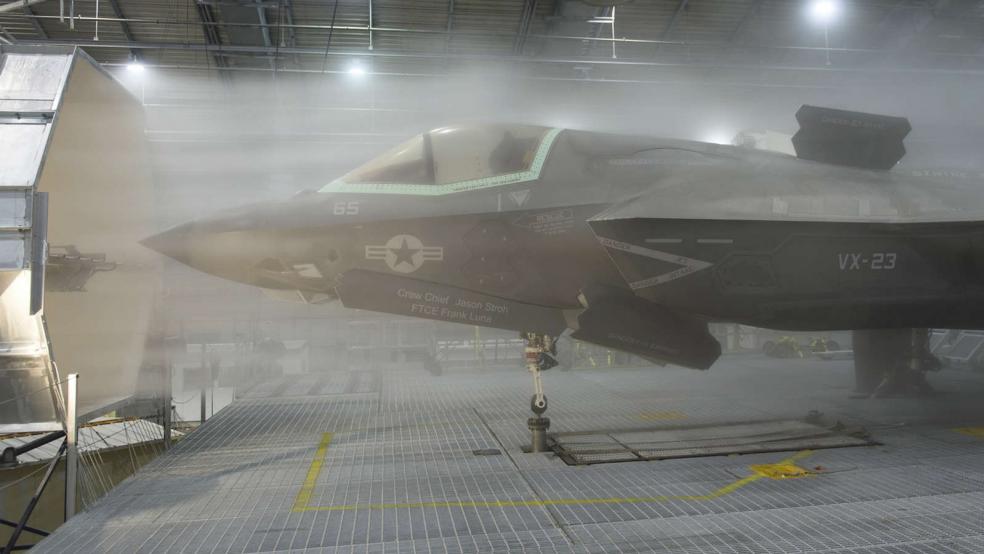It might have been just a coincidence in the raging battle of threats and displays of military might in and around the Korean Peninsula. But the U.S. military may have sent North Korea a not-so-subtle message.
On Sunday, Pyongyang released a clumsily doctored video purporting to show the nuclear aircraft carrier USS Carl Vinson in flames. The Vinson is central to the ongoing war games being conducted by U.S. and Republic of Korea (ROK) forces, and its F-18 attack jets represent a serious threat to the North Korean military.
Related: Tillerson’s Asia Trip Could Signal the End US Soft Diplomacy
The annual exercises always elicit a fiery response from North Korea, but this year the reaction has been more radical than usual: On Mar. 6, the North fired four missiles whose threatened targets were said to be American military bases in Japan. They landed in the Sea of Japan, but some of the missiles came as close as 190 miles from the Japanese coast.
Then on his first visit to Asia last week, new U.S. Secretary of State Rex Tillerson offered some of the toughest talk about North Korea in recent years, going so far as to say that if Pyongyang does not give up its nuclear weapons, all options, including military strikes, are on the table.
“Let me be very clear,” Tillerson said, “this policy of strategic patience has ended ... North Korea must understand that the only path to a secure, economically prosperous future is to abandon its development of nuclear weapons, ballistic missiles, and other weapons of mass destruction.”
Tillerson made that statement on Friday during his visit to South Korea. North Korea released the video two days later while Tillerson was in Beijing meeting with Chinese President Xi Jinping.
Related: Why Spending $1 Trillion a Year on Defense Won’t Make Us Safer
But if one intention of the video was to demonstrate how North Korea could disable the launch pad for American air strikes, the U.S. military signaled five days earlier that it doesn’t need a carrier for its latest fighter to be a threat.
On Mar. 14, an F-35B Lightning II attached to a Marine fighter attack squadron based in Iwakuni, Japan, was successfully refueled over the Pacific –- its first in-air refueling in that region. South Korea’s Yonhap News Service noted that the “refueling vastly extends the fighter jet's ability to stay in the air, enabling it to carry out key missions over the Korean Peninsula if the need arises.”
Correction: The story has been corrected. An earlier version stated that the USS Carl Vinson is equipped with F-35 aircraft, but the F-35 is not scheduled for deployment on U.S. aircraft carriers for several more years.





